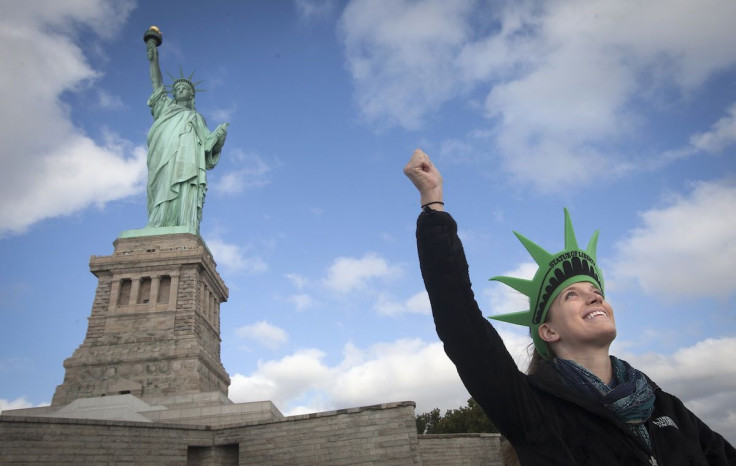What National Parks Are Open? And What Does That Means For The Economy?

It’s been a rough year for the U.S. National Park Service. After chugging along withered and worn under the chopping block that was sequestration, everything came to a dramatic halt this October amid a partial government shutdown that deprived the system of the basic funds necessary to keep gates open at 401 national parks, monuments and other sites nationwide.
Over the past 13 days, America’s shuttered national parks have become the focal point of cries for compromise on opposite sides of the political spectrum and the ultimate symbol of the very real impact of governmental gridlock. How, both Americans and international visitors have asked, could a nation founded on freedom and democracy close its treasured icons? How could it shut the doors to Independence Hall in Philadelphia or gate off the National Mall in Washington when both sites offer so many lessons that are more relevant now than ever?
While Congress is no closer to a compromise that could reopen parks nationwide, there is a bit of good news. U.S. Interior Secretary Sally Jewell said on Friday that she would consider agreements with governors who indicate an interest and the ability to fully fund National Park Service personnel to reopen national parks in their states.
Thus, at least three national symbols have reopened to the public (for a limited amount of time) thanks to donations by the states in which they lie. New York state paid $369,300 to have park-service employees reopen the Statue of Liberty to visitors, while Arizona ponied up $651,000 for Grand Canyon National Park and South Dakota forked over $152,000 for Mount Rushmore.
The Statue of Liberty and Grand Canyon (which together attract nearly 30,000 tourists a day in October) both opened Saturday with funds through Oct. 17 and Oct. 18, respectively, while Mount Rushmore will open Monday with funds through Oct. 23. Meanwhile, Colorado’s Rocky Mountain National Park opened Friday with $362,700 in funds good through Oct. 20.
Jewell called the states’ moves “a practical and temporary solution that will lessen the pain for some businesses and communities” during the shutdown. “We want to reopen all of our national parks as quickly as possible for everyone to enjoy, and call on Congress to pass a clean continuing resolution to open the government.”
However, Jewell made it clear she could not obligate the federal government to reimburse states that reopen their national parks, although repayment could be possible with approval from Congress. New York has dipped into its tourism budget to keep the Statue of Liberty staffed, while Arizona is using state funds and South Dakota is gathering donations from nonprofit groups and private companies.
Utah -- which typically earns about $100 million in tourism-related revenue when the leaves change each October -- took an even more dramatic approach to the shutdown, offering a whopping $1.67 million (or $166,572 per day) to have all of its parks reopened Friday. Arches National Park, Bryce Canyon National Park, Canyonlands National Park, Capitol Reef National Park, Cedar Breaks National Monument, Glen Canyon National Recreation Area, Natural Bridges National Monument and Zion National Park will all be open through at least Oct. 20.
“I commend Secretary Jewell for being open to Utah’s solution, and the world should know Utah is open for business and visitors are welcome,” Gov. Gary Herbert said. “Utah’s national parks are the backbone of many rural economies, and hard-working Utahns are paying a heavy price for this shutdown.”
The populist push to reopen parks nationwide began after several acts of civil disobedience from Valley Forge to the World War II memorial, where veterans pushed aside barriers and stormed the Washington icon in protest. Democrats have pointed to these acts to show the pain of a shutdown they’ve pinned on Republicans, while Republicans have accused President Barack Obama of holding the parks hostage, noting that his administration initially rebuffed attempts by states to help with funding.
Countrywide in 2011, the National Park System hosted 279 million recreation visits, which injected more than $30.1 billion into the U.S. economy. Of that amount, some $13 billion went directly to local gateway communities within 60 miles of a national park, according to industry figures released in February.
One of the biggest losers in the government shutdown thus far has been the hotel industry. The American Hotel & Lodging Association said in a letter sent to members of Congress and the president that the shutdown was costing the lodging industry $8 million per day.
Meanwhile, the U.S. Travel Association estimates the government shutdown costs the national travel economy $152 million per day due to the lost travel-related activity.
“The government shutdown is throttling America’s travel sector, which, until now, has been one of the principal drivers of U.S. economic recovery,” U.S. Travel President and CEO Roger Dow said. “Every day the government is shut down is another $152 million down the drain and another day of financial insecurity for as many as 450,000 U.S. workers whose livelihoods are supported by travel.”
Dow reminded the president and Congress on Friday that travel was America’s No. 1 services export and an industry that has added jobs faster than the rest of the economy since U.S. economic recovery began in 2010. “Shutting down the government is damaging, and every day the government remains closed compounds the very real consequences,” he said in a statement.
In a letter to the president and Congress, Dow asked for a swift resolution to the ongoing government shutdown, which he said was severely hampering an industry that generates $2.0 trillion in economic output and supports 14.6 million American jobs.
As of Sunday evening, 389 national park sites remained closed.
© Copyright IBTimes 2025. All rights reserved.






















